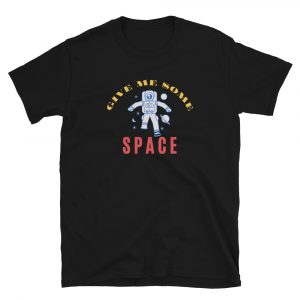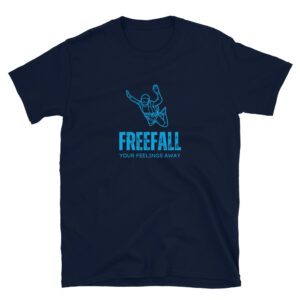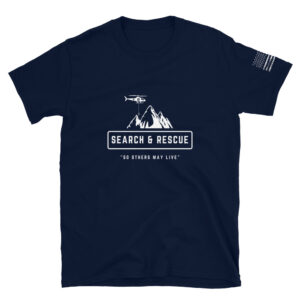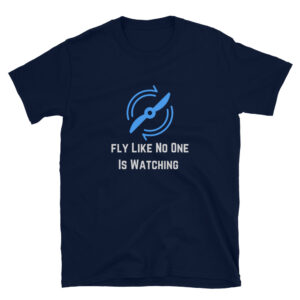Don't miss our flash to bang SALES!
Major “Buck” Harmon, WWII Veteran Reflects on War in the Pacific
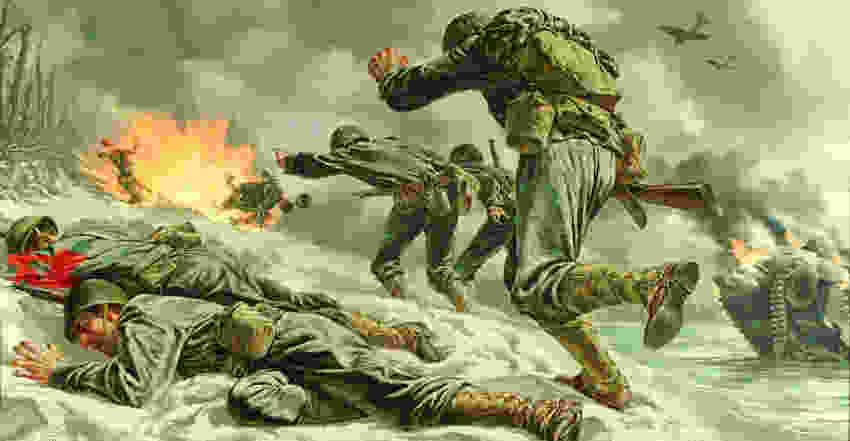 Major “Buck” Harmon, WWII Veteran Reflects on War in the Pacific
Major “Buck” Harmon, WWII Veteran Reflects on War in the Pacific
Question: All right.
Question: Okay, one thing, my questions won’t ever end up on the video tape, so if ask you a question like what your favorite color is, if you can just kind of reiterate my question in your answer.
Answer: Reiterate your question.
Question: Yeah, basically, if I’d say what’s your favorite color, you’d say my favorite color is —
Answer: Oh, okay.
Question: If I ask you your name you’d say my name is, you know — like that.
Answer: Oh, okay.
Question: In fact we’re going to start with that. I just want to know your name, the branch and military and what your rank was.
Answer: Is this on now?
Question: Yes, sir, and you just go ahead and talk to me, don’t even worry about that thing over there.
Answer: My name is Maurice Harmon, but everybody in the world calls me Buck Harmon. I’m from Ohio, went to Ohio State, and the Army always loved nicknames. They started calling me Buckeye, for Ohio State, but fortunately they shortened it to Buck, so I’ve been Buck Harmon for many years now. I’ve lived in Olympia about 40 years. What other question did you — (laughs) Oh, I started out my career in the US Army as a private. I was drafted out of graduate school, had to beg my draft board. In those days you had a draft board in every county who drew numbers out of a barrel, and if your number came up, off you went. So I begged my draft board to let me finish the — my semester, at any rate, which they finally relented. I think I was going to be drafted in April of ’41 and they let me stay until latter part of June until I finished the first semester of my graduate work. So that was 1941. I was a private for quite awhile, then cadet school and then gradually, eventually became a major.
Question: Where did you do boot camp?
Answer: I was in Maryland for the most part. My first station was Aberdeen, Maryland, which is the basis for where I learned armament and ordinance and all the aspects which came in useful later on, but at that time I didn’t know where I was going or whatever.
Question: So you came out of college and you were majoring in —
Answer: At that time I was majoring in psychology, which eventually changed when I came back to finish some five or six years later. But it was a psychological course to begin with in graduate school.
Question: So you were mid-20’s, 22,
Answer: Oh, yeah, 1941 I was 25.
Question: Twenty-five years old.
Answer: Yeah, I — that was ’41, yeah, when I was drafted. And as I say we all thought in those days, you didn’t ask this, but we thought we’d be drafted for one year. That was a good — and there was a song, a very popular song, that went Goodbye, Dear, I’ll be back in a year. And that was very popular. And Pearl Harbor interrupted with that year and so from then on, altogether, I was in almost five years.
Question: Wow. So when you went to boot camp, here’s this psychology major, we’re at boot camp now. Nobody’s talked about what boot camp was like.
Answer: Well I think in those days we didn’t call it boot camp but you use that term now to refer to it. But —
Question: What did they call it then?
Answer: Basic, I suppose you’d call it. I remember being — I remember one. I was only trying to get a master’s degree when I was drafted, but I remember when my turn came to wash dishes over at the mess hall. That was a horrible job to wash dishes in the mess hall. Especially what they called the grease trap. I’m telling you, that was something. But I sat down to wash dishes or peel potatoes or what have you, and my two buddies were a Ph.D from Harvard and there was another kid who had his BS from Yale. Here I was — talk about your talent — here we were, peeling potatoes. But those were — those were quite some time.
Question: So when you finished basic, how — did that go through Pearl Harbor, or were you already commissioned — where were you when Pearl Harbor happened?
Answer: I was still in Maryland. They were — matter of fact at that time the United States Congress, etc., not sure what our destination was going to be in terms of the war were beginning to release from service what they called quote “older fellows”. The older fellows were older than 28. And — so they were leaving and we were bidding farewell to all these guys — lucky guys getting out of the service that young. And I’ll never forget the raspberries after Pearl Harbor when they began drifting back carrying their little bag of civilian clothes. We really gave them the raspberry — they were back in the war. But the uh, obviously, Pearl Harbor changed everything, and we knew we were in for the duration from then on. But up to that time you only had to serve a year but if you were over 28 you got out early. That was still 1941.
Question: Do you remember where you were when you heard about Pearl Harbor happening?
Answer: Yes, I do, actually, literally. I had met a little gal at Larry’s Gallup in New York because we — the only place we could go on a weekend off, on a leave, we could catch the Metroliner that was — that went from Washington, D.C. to New York. And it went right through — near our camp. And we could catch that Metroliner and be in New York in an hour and a half, more or less, and enjoy a weekend in New York. And so many things free to soldiers, everything. The soldier’s canteen and so forth. See all the stars dancing, singing, and so forth. And so we went to a movie and the movie was How Green Was My Valley, Gregory Peck was a beginning actor then, rookie actor, and great movie by the way. And the movie stopped all of a sudden and ran a flash on the screen — one of these things where somebody writes it out on a slide and — all — everybody in the Army or Navy get back to their camp immediately. And so — what’s going on. So we didn’t know, sitting in the rest of the show there what was wrong. But they began to usher us all — I had to go back to Penn Station in New York, and by golly the crowd began to fill Penn Station of all the GI’s that were in New York City getting on trains. I remember standing up all the way from — in the train — back to camp. But it was an exciting day because nobody really knew what Pearl Harbor was. We didn’t know about Pearl Harbor. It shortly became very famous, of course, but in 1941 we didn’t know Pearl Harbor from — from Puget Sound. I mean there was just no knowledge of it. And so that started and made things different. Training started different. All the — as I remember, all the aspects of many, many things, just being in service began to be more serious and so forth.
Question: So did you — when you got back to base, did you know that you were headed to war?
Answer: Yeah, the war — the news had begun. Even on the train, some people had more information than others and we knew then that it was going to be very serious. It was only a few days, I forget, less than a week when President Roosevelt went before Congress and Congress declared war at that time. Which was — probably in retrospect was, even then too late. But at the time, if you remember Congress was very much against any embattlement on the basis that they were still using the Monroe Doctrine that — oh, that’s their war over across the ocean. We’re not going to fight anything across the ocean. That’s what dear old President Monroe was saying back then. When it took a slow boat to get to Europe in those days. But by that time German submarines were beginning to spy on the East Coast of the United States and so it was high time we got into the war. But it was a little too late, in retrospect.
Question: So when — what was your first active duty? I mean go through your training and all that, where did you ship to? Where did —
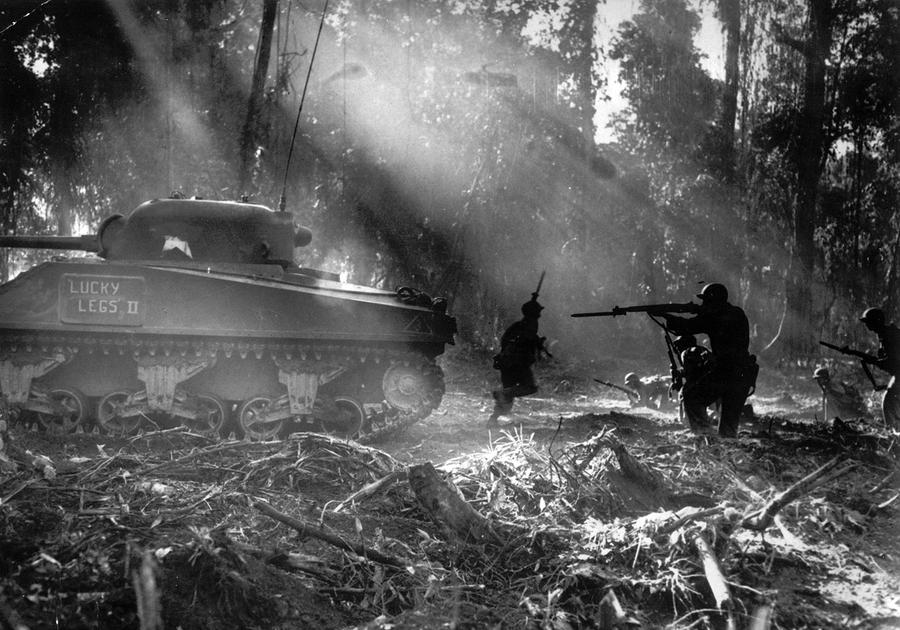 Answer: We shipped to — our first — we were shipped to the Pacific, flew to the Pacific from … God, my memory is very bad incidentally —
Answer: We shipped to — our first — we were shipped to the Pacific, flew to the Pacific from … God, my memory is very bad incidentally —
Question: That’s okay, so is mine, believe me.
Answer: — from a field in Sacramento — I can’t — no, it wasn’t, Santa Anna maybe it was Santa Anna, Hamilton Field, maybe it was Hamilton Field. We were a little bit frightened, not of the flight, but we weren’t sure our navigators could find Hawaii. Our navigators are kids 19 and 20, and — an awful lot of math goes into being a good navigator, and — well, since I was in the Pacific for years on, it was a big horror of thinking about was if our navigator got lost coming back and we had to circle an island at night, particularly, if he couldn’t find that damn island, we run out of gas and that’s as bad as being shot down. So, anyway, we were afraid that he might not find Hawaii. But we went to Hawaii with an understanding that we would soon be off to the South Pacific. But as you remember from history, Hawaii was still under shock of Pearl Harbor and so very careful to be on the alert that they wanted our bomb group to stay in Hawaii for awhile to fly search for any potential Japanese flotillas and ah, or air strikes. And they divided our bomb group. They didn’t divide it, but of course we had four squadrons with headquarters and the headquarters remained on Oahu near Honolulu and they divided the four squadrons on different locations to that in the event of an attack they wouldn’t hit our whole bomb group. And we were in — ours was in a place named Kahuka, which is if you picture us, Honolulu on the south end of Oahu, we were on the complete north end. It was about a drive of 65 more or less miles from Honolulu, and that’s where we were based. It was on a new strip and we were located, coincidentally, the end of the cable, which in those days was essential for communication from the United States to Hawaii was all by cable underground and it came out at that station in Oahu. And for some reason or other they had a very small strip for single-engine airplanes there, but they expanded it to allow our B-24’s to use that strip. So we were there for a few months and began to see action on strikes from Oahu from Hawaii but not as intense if course as when we later went to the South Pacific.
Our most famous mission there, which my friend Wally Hoffman who flew in Europe, B-17, unfortunately he never had the opportunity to fly a good airplane like a B -24, but — but he probably would have laughed at that, but anyway, what brought that up. Oh, he reminds me all the time of our — what he thinks was our first big mission off Oahu, our most famous one. I have some question whether that was our most important mission, but in any event, we were ordered to fly. Historically it’s important because so many people can recall Wake Island, which was captured by the Japanese at the same time that they bombed Pearl Harbor. Even though it was some 2,500 miles away. And we were ordered to bomb attack Wake Island which was then held by the Japanese with a flight for fuel on Midway. And not quite halfway but about a third of the way. And so we bombed Wake Island. I mention it primarily to give you some historical aspect of time because you’re interested in time. This was Christmas eve, of all times, in 1942. Forty-two, yes, 42. Easy to get these years mixed up. And it drew a lot of headlines and primarily because this was the first offensive as against defensive, first offensive maneuver of either Navy, Air Force, Infantry or whatever that the United States had created. This was an offensive mission against Wake Island, against the Japanese who held it. And it was a — as far as bombing raids are concerned, we were fortunate, we did a good job and hit the major buildings and air strip of Wake Island. And came back again via Midway and didn’t lose any crews — nobody was lost; that was a significant thing, because this was a very long mission and everybody gets tired flying that long, including navigators, and it’s easy to understand getting lost. Of course when you fly over so much ocean there’s no ground sites for a navigator to — even if he gets lost he can recognize well I should be near that city or that road or something. But nothing but water down there. We had a lot of respect for navigators, although we cursed them a lot when we got lost, too. But anyway, so much for that. That’s when we had our first mission to Wake Island.
Question: Now what — you were — what was your duty, your position within the plane?
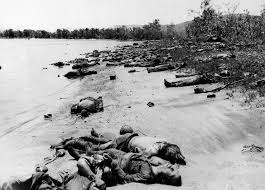 Answer: In the early days I flew the plane and that — I was — I’ll get into it later as you ask questions. I was grounded eventually and didn’t — and wound up in a different duty, but starting off, I was flying.
Answer: In the early days I flew the plane and that — I was — I’ll get into it later as you ask questions. I was grounded eventually and didn’t — and wound up in a different duty, but starting off, I was flying.
Question: So in the Wake Island Mission you were a pilot —
Answer: Yes, I was one of those that went along with the mission and our — to show you the importance of it at that time, they chose our colonel, a full colonel, who later became a general, to fly head of the mission because they didn’t want this to fail. This was a very articulated mission and had to succeed more or less for the psychology of it if nothing else. It was blown into headlines around the country and all that sort of thing.
Question: That’s probably why they put the psychology major out there.
Answer: (laughs) I don’t know about that. I was — I was pretty poor at either function, flying or psychology. But anyway, it was interesting.
Well from then on we flew a lot of search. The people — as I mentioned earlier, the people in Hawaii were still on the alert even though Pearl Harbor was several months before. And so we flew alert, meaning, and our biggest alert, if you want to go — you want me to expand into that?
Question: Sure.
Answer: Was when the — the … oh, I’m going to mix up, I can’t remember whether it was the first battle at Midway or the second battle. In any event there was this bad rumor that — no, no, I’m sorry, so easy to forget. Was a mission where we flew to a tiny coral island in the middle of the Pacific below the equator. Very lengthy haul. We stopped at Canton. We were going to stop at a little island called Christmas Island for fuel, but they were afraid the strip, which was brand new, may not be worthy yet of holding a heavy bomber, so we flew to a rather large US base, Canton Island and re-gassed and refueled and then flew on to this little coral atoll of Funafuti was the name of it. If you were looking on a map you’d find it almost on the — on the International Date Line, but several degrees below the equator. And here again was a navigation problem of finding that little coral atoll because from 30,000 feet you can hardly see a coral atoll and you want to make sure that the navigator knew where we were going. And in any event we got there and they — the high command, then the 7th Air Force, ultimately most of my career in the Pacific was under the 13th Air Force, but since we were still based on Oahu in Hawaii, we were under the 7th Air Force. And they wanted us to fly to Funafuti where we were told that the Navy had been in there briefly allowing Seabees to build an airstrip. And so we had an airstrip there. And we were to bomb an island called Nauru which was roughly top of my head, roughly a thousand miles away. To bomb this island because the major Japanese-held phosphate mines were there, and phosphate is a requirement for ammunition — bombs and ammunition and so forth, and to bomb that. So, okay. So we had — we had to take along as passengers, more or less in the aircraft, all of the support personnel because there was no base there or anything, just Polynesian natives there, wonderful Polynesian natives. And that was all. And so we had to carry with us every kind of support service personnel — everything it takes to keep an airplane in the air. Especially the — the mechanics that took care of the airplane and made sure everything was hunky-dory, and everybody, so it was almost stand-up situation flying that bomber. Everybody got tired of standing that long. And, I’m exaggerating. You could sit if you wanted to sit on the floor of the plane but it was almost stand-up. And so we bombed Nauru and — and did a good job. We blew hell out of those mines and when everybody returned successfully, we had no interference from fighters or anybody, Japanese heroes, so it was sort of a minor sort of celebration that everybody got back alive and no troubles. But the high command failed to recognize, which gives you an example of the lack of strategy early — especially early in the war. They never suspected the Japanese may tire of this type of attack. (laughs) And bomb us back, which they did with revenge. And it’s a sorry note in my memories because it was a very horrible thing. It not only killed several of our people. I was able later to be awarded a Purple Heart which was rare for somebody who’s major aspect was flying up in the air to get hurt on the ground, but it killed several of our people and wounded even more. But the worse thing that stands in my mind is the many, many Polynesian natives that were killed. And, particularly because they were innocent victims of this whole war. They didn’t — the so-called uncivilized island of natives, although they were very civilized people. But the — while two so-called civilized nations were at war, why they suffered and pretty much wiped them out. Unfortunately there was a — it took the Navy four days later to take off those islanders off the island. They should have anticipated taking them off and the Navy should have been aware of the dangers to those people and removed them before this. But nobody in the high command anticipated we might get bombed back.
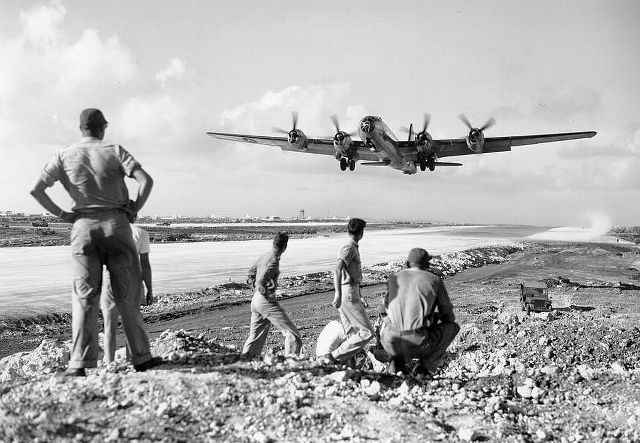 Again, I’m forgetting my sequence —
Again, I’m forgetting my sequence —
Question: That’s — that’s okay.
Answer: — because what really made the Japanese upset was not only our bomb on Nauru — they also — they gave us an additional bombing mission when we were there and it was so successful on Nauru they thought we could do this all the time. They added Tarawa — some people call it Tarawa, but we were ordered to bomb that island which was very, very heavily fortified. And it took — we didn’t have them — our limit was a 500 pound bomb, but it took a thousand pound bomb, if then, to — to get through and destroy some of the Japanese barricades on Taraw
Answer: They were in deep revetments, protected by huge cement — they made them into cement boulders covered with huge logs and so forth. And the poor Marines who later had to attack that island suffered from that heavy revetment the Japanese were in. They were practically irremovable in there. And so well protected that — that an awful lot of young Marines were killed on that attack. But anyway, that’s — we bombed Tarawa and then began our problem of the bombing raid by the Japanese on us and destroyed so many of our aircraft sitting on the strip down there. Unbelievable that they could come along and out of nowhere we had about — how many airplanes — twelve or fourteen of them I think sitting on the strip and half of them were destroyed in their attack. How was all, were all these people going to get back? There wasn’t any room to — to fly this many people back. And believe me we were very eager to get off of that island. Because we figured another attack and that was — anyway, that was part of the problem which they finally flew a plane from Canton to help relieve the traffic. So anyway that — you asked missions off of Hawaii, that was one. And I think that was our last.
Oh, in the meantime the high commanded decided to still alert about flying search for any intruding Japanese ships, they decided to split our bomb group, which was sort of a tearful thing. And they kept two squadrons on Hawaii and two they took to Guadalcanal, which became … our really first operational combat base. And later, not too much later, why the other two squadrons went down there to Guadalcanal, too, so there were four squadrons there. We first flew to a little island — not little island, but an island, Espiritu Santo, which lies south of Guadalcanal, and then at Guadalcanal they — they joined all four of us. What really held us up to join the other squadrons at Guadalcanal was we never knew from day to day who owned the airfield, which was called Henderson Airfield. The — the fighting between the Japanese Infantry and the American Marines is historic. And you have to almost first-hand experience what those young Marines went through and the courage and vigor that they fought that war in. They were terribly out manned and they were not used to jungle warfare. Here’s where jungle warfare began. Up to this time infantry troops were pretty much scheduled on the regular hip, hip, hip, to go into a battle in line formation, etcetera, like the old British and the old French did, you see them in the movies. They didn’t know what jungle warfare — they didn’t know about shooting enemy out of trees, out of holes and all that sort of thing. But they learned in a hurry to do it then themselves. And so ultimately Guadalcanal became secure. But even after they told us it was ready to — to have all four squadrons fly off of Henderson Field, it was scary even then. Sometimes we had to wait at the end of the strip early in the morning until we were sure if the Marines or the Japanese controlled the air — the field. So it was — that went on for a few weeks, but ultimately why the Japanese were victorious. And of course the other thing was the Japanese ships kept coming down what they called “the slot”. Guadalcanal is about the southern end of the Solomon Islands. There’s about five major islands there. And in between the island, they called that the slot. And the Japanese ships would come down there and bomb hell out of Guadalcanal. And again historically it may not be significant to many people, but a lot of captains of some of the cruisers and battleships were relieved from duty because they were not hitting and sinking these Japanese ships. They would fire away, their torpedos, no, God. And so they were relieving all these high Navy officers because they’re — they’re — literally their aim was so poor. They didn’t know how to shoot these things. Well, it took the Navy approximately six months to recognize the fact that their fuses on these torpedos were not going off in approximate. They were proximate fuses. So the Navy captains were shooting correctly. They would go — but their torpedos would go under the enemy ships and never go off when they were supposed to go off, when they were approximate, near the target, but they weren’t. So they blamed the captains for doing that. But it — it was — it became more than a laughing matter because you — — you lived on Guadalcanal with the fear that any day the Japanese would re-take Guadalcanal. Guadalcanal, when we finally were — it finally was captured completely by the Marines and ultimately the division of the Army went in there to relieve the Marines. As I say I can’t emphasize too much the value of the group of young guys, they were 19, 20 years old, they lived like pigs. It was terrible, but they fought like crazy. And it was a bitter battle. But it was a very, very, very key battle. That’s why the name Guadalcanal lives on in history because up until that time, and this has to be emphasized, the Japanese conquered whatever they wanted to conquer. All through Asia, all, you name the country and they went right through it like a dose of salts. And finally they — in the Battle of the Coral Sea, which is off the northeastern coast of Australia, the Japanese flotilla was aimed at landing troops on Australia.
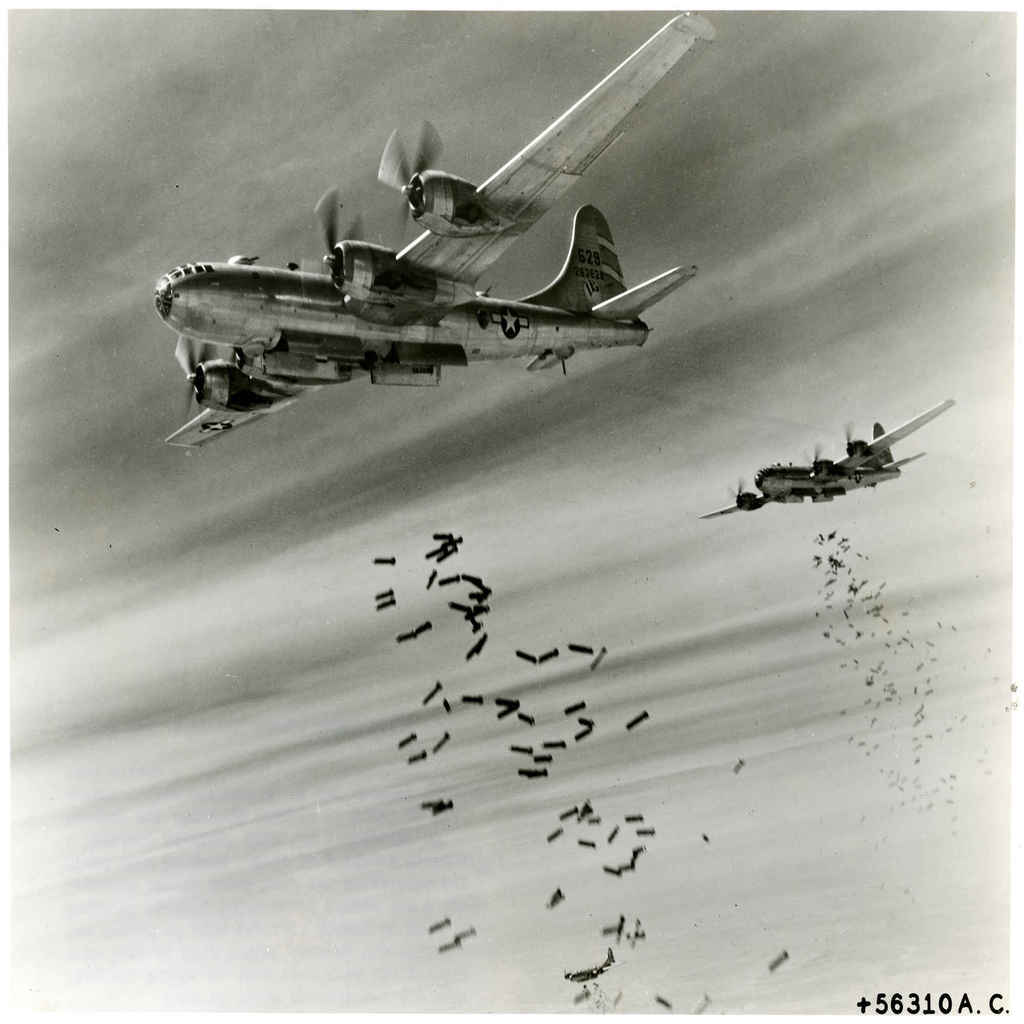 Answer: Now this was very, very crucial because Australia became the key depot, let’s call it, transportation, everything of the American Forces in the South Pacific. Everything landed first at — in Australia, whether depots for supplies, food, guns, everything, airplanes, you name it, were shipped out of Australia to the — — whatever island was required to have it. And if Australia had fallen, it would have been a very, very crucial thing which could have altered the war. As a matter of fact, Australia was so sure that they would be attacked that they drew what was called, vernacularly, the Brisbane line. Brisbane is a city on the east coast of Australia, clear over to the west coast, which is roughly the size of the United States. Australia’s a big country, and they were ready to give to the Japanese everything north of the Brisbane line when they attacked in an effort to mass their troops to protect the major cities, which lay south of the Brisbane line. Sydney, Melbourne, Adelaide, cities like that. And so that’s who crucial it was. And so the Americans carrier force under Admiral — my memory is such that I can’t remember names very well, but he became a famous admiral later. He reported to Admiral Halsey but it’s not Halsey I’m thinking of. There was this admiral in charge of this particular mission or this fleet. They met the Japanese flotilla head-on in a battle of the Coral Sea, which is, as I say, off the northeast coat about 500 miles from Australia, 500 or less. And had the first recorded air battle — first recorded Naval battle in history where the ships never saw each other. It was entirely an air battle. The Japanese Zeros and the American Naval planes, Corsairs and those planes fought a fantastic aerial battle, which really was about a tie as those honest referees decided. But morally it was claimed to be an American victory, because it stopped, for the first time, the Japanese onslaught going south all the way to Australi
Answer: Now this was very, very crucial because Australia became the key depot, let’s call it, transportation, everything of the American Forces in the South Pacific. Everything landed first at — in Australia, whether depots for supplies, food, guns, everything, airplanes, you name it, were shipped out of Australia to the — — whatever island was required to have it. And if Australia had fallen, it would have been a very, very crucial thing which could have altered the war. As a matter of fact, Australia was so sure that they would be attacked that they drew what was called, vernacularly, the Brisbane line. Brisbane is a city on the east coast of Australia, clear over to the west coast, which is roughly the size of the United States. Australia’s a big country, and they were ready to give to the Japanese everything north of the Brisbane line when they attacked in an effort to mass their troops to protect the major cities, which lay south of the Brisbane line. Sydney, Melbourne, Adelaide, cities like that. And so that’s who crucial it was. And so the Americans carrier force under Admiral — my memory is such that I can’t remember names very well, but he became a famous admiral later. He reported to Admiral Halsey but it’s not Halsey I’m thinking of. There was this admiral in charge of this particular mission or this fleet. They met the Japanese flotilla head-on in a battle of the Coral Sea, which is, as I say, off the northeast coat about 500 miles from Australia, 500 or less. And had the first recorded air battle — first recorded Naval battle in history where the ships never saw each other. It was entirely an air battle. The Japanese Zeros and the American Naval planes, Corsairs and those planes fought a fantastic aerial battle, which really was about a tie as those honest referees decided. But morally it was claimed to be an American victory, because it stopped, for the first time, the Japanese onslaught going south all the way to Australi
Answer: They were ready. They had Infantry troops, everybody, ready to land on Australi
Answer: And this stopped them and they turned around and landed on this no-good jungle island called Guadalcanal, and that’s where they started to rebuild whatever forces they wanted to and then when our high command decided we had to capture Guadalcanal. So that’s why that was so famous as an island. But the Japanese, fortunately, knocking on wood, never got any further south than Guadalcanal. But that’s a long story, but I thought historically it might be important.
Question: Yeah, it’s fascinating. I mean because that’s —
Answer: A lot of people hear about Guadalcanal, it’s sort of gone down in history in a sense. But I don’t think they understand completely the significance of it. It was a — it was bastion that had to be held, no question about it. Otherwise they would have shot from there off into Australi
Answer: Darwin — Darwin was already being bombed. That’s on the complete northern shore of Australi
Answer: So it was terribly significant, not because I’m familiar with that story but no doubt about it very significant.
From then on our bomb group went north up to other Solomon Islands. Am I getting ahead of your questions?
Question: No, no, you’re doing great.
Answer: I don’t want to. But there were five or six major islands in the Solomon Islands, and we were busy bombing most of them. All of them except Guadalcanal was held by the Japanese. Although there would be certain invasion points that were little pieces on the coast that were held by the US, primarily Navy bases. Matter of fact one famous Navy base is where ultimately President Kennedy was based as a lieutenant in the Navy and that famous time when he was in a — what do you call those, the PT boats?
Question: Yeah, the PT — PT 109 or PT —
Answer: Yeah, something like that, and again I forget names sometimes, but PT boat, and he became a hero because with the rope in his mouth he swam back to rescue a comrade that was shot. And so there were those little, smaller points that were held as shore positions in the Navy. But primarily they were Japanese so we were bombing those forces. And the high command decided the first island that we would literally take, not just bomb, was New Georgia, the native community was called Mund
Answer: And eventually New Georgia was captured, and they moved our – before — before there was any civilization there including water or anything else. They moved our bomb group up there. We all thought that was pretty damn hasty because we didn’t anticipate much food but we at least would have liked some fresh water. But anyway, we built a base there — the Sea Bees built a base for us. Sea Bees are a wonderful organization that the Navy had. I have a lot of negative thoughts about the Navy on occasion, but the Sea Bees were a wonderful fighting force and mostly engineering groups and sometimes the guys riding a tractor or roller to build an airstrip for us were armed while they would drive that tractor. They had a rifle, they were ready to shoot anybody that would attack them. So they were in early to take some of those islands and begin to build places where the Air Force, primarily the Air Force could live after the island was built up. So, so much for the Solomons.
We went north and west from there. Covered a lot of the Pacific. We began to realize what a huge damn place that Pacific Ocean is. And, but anyway, it was quite a job preparing us to move as we went. In the meantime, MacArthur, you will remember historically, he was — he escaped from the Philippines, Corregidor, on a PT boat. And they took him to Australi
Answer: And although our — our bomb group in the South Pacific was under the command of Admiral Halsey, the Navy, even though we were Army Air Corps. People still ask me if I was in the Air Force and I say, no, I was in the Army Air Corps. But we were under Admiral Halsey. He was a pretty decent guy and well respected by all of us. But as we moved north and west, in the meantime MacArthur had established his headquarters in Australia and then we became under him in the South West Pacific. There was that distinction, in Army medals, etc., in terms of location, were different, whether you fought in the South Pacific or the South West Pacific. It became a different thing. We all, let me put it succinctly, we all felt more comfortable and admired Admiral Halsey a bit more than General MacArthur. He was not well liked by his troops, whether it was infantry, artillery, Air Corps or whatever. But anyway, that changed our hierarchy as to who we reported to. I don’t know whether you want me to go on geographically or — it’s your call.
Question: No, this is fascinating. You’re taking me right through it. Makes my job real easy.
Question: How many missions did you end up flying?
Answer: I only flew eleven, and I — I was grounded. I, very grievous experience, but nevertheless I was grounded because a colonel thought I left my pattern too quickly over — we were attacking Rabaul which was a major, major, major Japanese headquarters. And — on the island of — what island is that on, New Britain. Anyway, one thing led to another and they thought I’d been there long enough, anyway, blah, blah, blah, and so they placed me into group headquarters and I — as part of operations, but actually most of my function was in — being responsible — I was responsible for four squadrons of armament, meaning ammunition, guns, bombs and all that supply type of thing. And I flew — I flew on a lot of missions, actually to be an observer. Sometimes I flew as a gunner. Only officer that ever flew as a gunner, but at least it was an experience, and I — I learned a lot about turrets. I was too big to fly in a turret, except the bombardier could fly in a bigger turret, but the — the tail turret and the belly turret were — were — I was — you couldn’t be over 5’10” and be comfortable in those tiny turrets. Especially that belly turret and I always felt so damn — I don’t know, whatever, for the belly turret guy, because if a turret was ever shot out of an airplane, he could fall 5, 15,000, 30,000 feet in that damn turret till it get down to the ground and couldn’t get out of the thing. But anyway, that’s getting off to something else. So in headquarters, among other things I lost my rotation, which theoretically, although some crews had to stay a little bit longer, but if you got 25 missions or 18 months, you were returnable to the states. I was there almost three years and officially non-flyer and all of my flights from then on were voluntary pretty much. But at least I was officially not, and stayed until they — there were enough forces now that they could afford to send us back and replace — replace us in the South Pacific. For my experience of staying almost three years for non-flying personnel was typical. Most all the guys were there three years, and especially some of the guys who had to work so hard physically. Most of my work was desk and that kind of thing, supplies, keeping track of things and inspecting certain aspects of — of the armament on a plane. Wasn’t the heavy labor that some of the guys had to — and especially in the unenduring, unendurable heat of being in the South Pacific constantly, humidity. And some of these fellows were — after three years were truly beat up. I witnessed guys I knew real well. I can think of Mack and Pete, enlisted personnel, some of my tech sergeants and so forth. They were big husky guys, 195 pounds. I can remember them looking like they were going to fall through the earth at 160 pounds — it took a toll on them. They worked hard, they worked hard, and very dangerously at times. Often they were down on the strip during air attacks and things like that. And … anyway, so three years later I finally got my orders to come home.
Question: As a pilot, what was your — when you went on a mission, what were your duties?
Answer: Pilot?
Question: Yeah.
Answer: Well, you can get a lot of pilots in here and they can talk about the duty. The duty was primarily to be — to fly the airplane and to take leadership over all your crew and give them directions as necessary. When you say, (laughs) — that’s easy to say, but a lot of sub-duties that fall out under that.
Question: Well, I heard one pilot saying that the focus was so much, I mean there was kind of this war going on around you, but your focus was on there and making sure where the rest of your squadron was and so the planes flying at you, that was not your duty at that time. Is that?
Answer: Well, maybe not on your duty but boy you sure watched carefully and observed carefully, especially any airplanes coming directly at you. The Japanese were — well, let me just put it generally, a very, very intelligent smart military group. They knew a lot more about us than we knew about them. They knew, for example, before we had a belly turret, that we were vulnerable under — by flying under us and shooting underneath at an angle. And as far as that’s concerned, we had no turrets for quite awhile. So there were certain ways, when the Japanese would come at you, that were more dangerous than others cases. But, and I don’t think — you talk about other people you talked with. They flew in tremendous flotillas in Europe. Scores of airplanes in some of their attacks. We didn’t have that type of target situation or enemy situation in the Pacific. We would fly as a bomb group but even then sometimes our squadrons would be separated from the other squadrons, coming in at a different angle on an island or something. And there were certain bases that our people were attacked viciously by Japanese Zeros, and they were able flyers, very able flyers. And in the early — early days, particularly the Pacific, it might have been semi-true also in Europe, but I’m not that well versed with the details in Europe. The — our early aircraft in World War II in the Pacific of fighters were not of the caliber of the Japanese Zero. The Zero could fly circles around our airplanes, especially the infamous plane on our side was the P-40, you remember it was painted like an alligator or something on the nose of it, I forget what that animal that was. But they were a glorified airplane but they were not the — to begin with, the fighting instrument that the Japanese Zero was. And this went on through ’42 for the most part. And as a matter of fact I’ll never forget the first time I ever saw a — a Lightning. Some of my friends could tell me that was a P — they had — they had twin fuselage. And we were alerted, we were all on the ground there. It was a Sunday. Not that we’d get off on Sundays but that Sunday we weren’t flying. And, and we got alerted there was an air raid coming. And so all of us run to our fox holes, and we don’t get underneath until we have to, we were sitting on the edge of our fox hole and the air raid was beginning. And for the first time this squadron of Lightnings took off and we sat there watching this air battle. And it was unbelievable. We were watching these Lightnings shoot these guys out of the sky like crazy, falling down, smoke, trailing smoke, it was unbelievable. And we knew finally we had arrived, here was an aircraft that was not only to the Jap Zero, it was better. And so from then on with additional aircraft, P-51’s especially and the P — my memory is getting so terrible. The aircraft that Commander — what’s the airfield in Chicago, quick —
Question: O’Hare.
Answer: Thank you. Major O’Hare was — was a group commander of this fighter unit. I’m skipping over something that’s pretty important. When we were in New Guinea we were ordered to attack — by this time I was not on the mission, but we were ordered to attack Balikpapan in Borneo, of all places. Whoever heard of Borneo having airplanes — all we ever heard in school was a jungle island having monkeys. And — this was a very, very long mission. Very long. We flew from New Guinea all the way over to Borneo, and our — our squadrons were met with — with tremendous amount of fighter cover over the target. And we lost a barrel full of aircraft on that mission — first mission. Well, some of the planes that were badly damaged but not shot down were unable to make it back and had to ditch in the ocean, which is — might as well be shot down because nobody’s going to find you. And even if you escaped from the airplane, which was rare in the first place. But they always said if you land on water carefully, that you’ve got a chance, you’ve got maybe 30 seconds to get out and get into a life raft. But even if you did, which was rare, nobody gonna see you in that ocean. At 30,000 feet or 10,000 feet you can’t find a little rubber raft. So anyway, I don’t want to get carried away from my story. Cause Major O’Hare was the guy. So we couldn’t get back with damaged aircraft, and the Air Force called O’Hare and could they fly cover for us on this Balikpapan. Well, yes sir, we can fly, he said to the general, but you know we couldn’t fly back sir, that’s too far for our capacity to fly back. And we’ll have to ditch. He said, well suppose we have some Navy submarines and other light cruisers, etc., out there to try to pick up all of you, would you fly it then? He said do you mind if I ask my men? They volunteered. Brings tears to my eyes. … I’m sorry.
Question: That’s okay. Need to stop or —
Answer: They volunteered to a man, and a lot of them were lost flying back because they couldn’t fly that far — they run out of gas. But using them as cover was a tremendous difference. And they flew a P-71 – oh, damn, it was a big plane for a fighter, but it was a powerful airplane. And, oh, I’m so mad I can’t remember. P-52, … If some of my friends were here they could remember, probably, but I can’t recall it. And anyway, he — he flew that cover coming back. And that made a big difference, although we still lost several aircraft. But Balikpapan was the — was the Ploesti of the Pacific because the Japanese had their major oil refineries in Borneo and that was our mission to destroy those refineries. And we were also joined on those missions by the 5th Air Force which is another Air Force occupied mostly in Australia and they flew bombing Balikpapan, too. Very important mission and not too well known because it was so far away from everything. Associated Press never got that far away or anything, and so. But I still admire the bravery of that fighter group and many of those guys were lost forever, and who knows about it, who cares, you know. Another dead group of people, that’s all, and they were a wonderful group of people.
Well, anyway, it was — by that time we were — I’m covering a lot of mileage here. After the Solomons, we were up on the Admiralty Islands, then we flew, I mentioned over under MacArthur over to the northern coast of New Guinea, and New Guinea is so big, it’s the second biggest island in the he world, Greenland is the first. There were many bases along the northern shore of New Guine
Answer: And we would move westward with all of them and finally, finally some two years, 2-1/2 years later we were on an island, Moratai, which is south of the Philippines, and would bomb targets in the Philippines. By that time the Japanese force was beginning to wane because, see, among other things not as recognizable to the — to the person of short look — their Japanese Air Force began to lose power. Not because of the lack of Zeros or machinery or whatever, their pilots. They lost so many pilots in the battle of Midway, if you can recall, the Japanese got mistaken, ah mixed up and on one of their battle ships, one of their cruisers, excuse me, aircraft carriers, they had a squadron of torpedo bombers all ready to take off and fly against our Navy and they changed signals themselves, they got a different — from Yamamoto or somebody, they got a signal to change. So they had to take off the torpedo bombers off deck and bring up all their fighter bombers. And in that transition which you can’t do just be snapping your fingers, it takes awhile, is when our Air Force fighter group, Navy fighters attacked — began to attack. What a beautiful mistake on the part of the Japanese to not have recognized what they had to do before it was too late. It was during that pause of maybe, let’s say 30 minutes catching the wrong plane on the deck the wrong time that they sank that aircraft carrier. And as I said earlier, the major problem was not necessarily losing those planes, losing all of their skilled pilots, not only on that ship but throughout the battle of Midway, which downed, I think, two or three other aircraft carriers. They lost scores and scores of trained expert pilots. And that hurt them badly. From then on they began to train any young kid who could fly the airplane and keep it in the air became their pilots. But they lacked the skill and experience and it became easier. So were bombing the major islands and major places rather and islands of the Philippines, bombing Corregidor, lot of familiar places in history and Manila and so forth. But the Japanese were on the wane. It was only a matter of time. We found very — very slight opposition. We had to be careful if some of those young inexperienced fighters might want to crash us because they had a spiritual feeling that death under the glory of their empire was a sure way to heaven. So then came the famous dive bombers where they — they were very useful — they began to wreck ships and so forth.
Question: So where were you when peace was declared?
Answer: I was — I was — that’s a good question because it’s semi-funny. I was back in the states and my dear wife and I, who became my wife, were married when I got back. We had put off. This was interesting in a way. We put off getting married while I was still in the states because I, like most people, thought the war with Japan would last at most six months, that I’d be back, Honey, in a short time. So let’s wait until we get our time to get married. So instead of her waiting three or six months, she waited three years for me. So I got back and we – we had our honeymoon and we went to Quinault for our honeymoon. And it’s a wonderful place up there. But my wife is still angry with me after 52 years because all I could do is read the paper. What I was reading was about the atomic bomb. I couldn’t believe that there was such an instrument. And we — we kept hearing rumors that something big was going to happen but we never heard of anything like — we didn’t know enough about a nuclear bomb to even dream about it. But what — what really made me so concentrated on the papers and the detail. When I thought back (SEE NEXT INTERVIEW)
Major “Buck” Harmon, WWII Veteran Reflects on War in the Pacific story courtesy of WWII Voices in the Classroom, www.wwiihistoryclass.com)
Great selection of military related shirts, mugs, and posters on The Frontlines shop, and check out all of our stuff that is on sale right now. The Frontlines Shop
Popular Products
-

Give Me Some Space
Price range: $18.95 through $23.95 Select options This product has multiple variants. The options may be chosen on the product page -

Freefall Your Feelings Away
Price range: $19.50 through $28.00 Select options This product has multiple variants. The options may be chosen on the product page -

Search & Rescue
Price range: $25.00 through $33.50 Select options This product has multiple variants. The options may be chosen on the product page -

Fly Like No One Is Watching
Price range: $20.00 through $28.50 Select options This product has multiple variants. The options may be chosen on the product page

